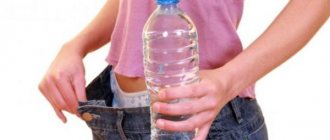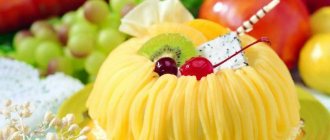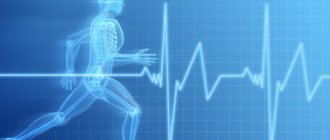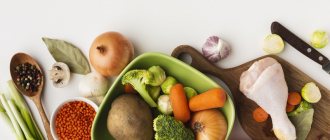Delicious dishes that can be prepared for future use.
Cold oatmeal, cutlets, meatballs, lasagna or stuffed peppers can be prepared for future use. The side dish “lives” in the refrigerator for a day, the sauce lasts for two days, eat the salad fresh, but you must cover it with a lid and under no circumstances leave a spoon inside.
It is better to buy bananas on the weekend and slightly unripe, so that they can be preserved until Friday and always be at hand. Don't be afraid of butter and full-fat milk, you're not a dry bikini, after all.
Cold oatmeal with fruits, berries and seeds
Yes, there is an error in the recipe: pumpkin seeds are called cardamom. Sorry.
Ingredients for four servings:
- 360 g oat flakes
- juice from 4 oranges
- 160 ml water
- 20 g pumpkin seeds
- 10 g sunflower seeds
- 20 g raisins
- 2 apricots
- 40 g blueberries
- 4 strawberries
- 4 spoons of natural yogurt
Take the largest oatmeal flakes, the least processed ones, that is, those that require cooking - they have more fiber and vitamins.
In the evening, put the flakes in a blender and squeeze the oranges into them (if the pulp gets in, it's okay - it tastes better), and then blend for 30-50 seconds. In a separate bowl, mix pumpkin seeds, sunflower seeds and raisins, cover them with water. Close the container with ground oatmeal tightly with a lid, and it would be better to cover the seeds and raisins with something. Place both bowls in the refrigerator and forget about them until the morning.
In the morning, place the oatmeal mixture on plates, add seeds and raisins to it, and then decorate the dish with your favorite fruits, berries, nuts, honey or natural yogurt. If you still have oatmeal left after breakfast, you can safely store it in the refrigerator for 2-3 days - nothing will happen to it.
We have calculated the calories for the ingredients listed above, so if you add anything else, the numbers will of course be different.
One 220g serving contains: 450 calories | 14 g protein | 9.7 g fat | 74 g carbohydrates
3500 calorie diet
Delicious dishes that can be prepared for future use.
Cold oatmeal, cutlets, meatballs, lasagna or stuffed peppers can be prepared for future use. The side dish “lives” in the refrigerator for a day, the sauce lasts for two days, eat the salad fresh, but you must cover it with a lid and under no circumstances leave a spoon inside.
It is better to buy bananas on the weekend and slightly unripe, so that they can be preserved until Friday and always be at hand. Don't be afraid of butter and full-fat milk, you're not a dry bikini, after all.
Sandwich with ham, tomato and cheese
Ingredients for two servings:
- 2 slices of rye bread
- 1/4 medium tomato
- 2 slices of ham (50 g)
- 2 slices hard cheese (50 g)
Cut, fold, eat.
One serving contains: 382 kcal | 24 g protein | 19 g fat | 26 g carbohydrates
Proper nutrition for gaining muscle mass
During strength training, muscle fibers receive micro injuries, and during rest the body tries to restore them, but with a small reserve, in case something like this happens in the future. Therefore, proper nutrition for gaining muscle mass should be complete and of the highest quality. After all, if we eat various buns and cakes, we will not be able to achieve our goal.
If you think that training plays the main role, then you are very mistaken. About 70% of success in gaining muscle mass depends on the nutrition program . Yes, yes... exactly from the nutrition program. No matter how you train, without the right plan, there will be no good progress in gaining mass and strength. Even the most ideal training scheme will not bear fruit.
On the Internet you can find many different diets (schedules) for gaining muscle mass , but not all of them are made wisely. It’s just that every author tries to come up with something new. Make some amendments and your own observations (for example, they include some specific foods in the diet or give recipes for some unique dishes that cause weight to grow at an incredible speed, etc.). But in the end, as a rule, nothing good comes of it.
Why doesn't it work? Yes, because everything has long been invented and tested in practice by a very large (simply enormous) number of people. Now I will provide you with all the necessary information (the same information that has been tested in practice), which will help in building mass. And you, in turn, will read it, sort it into shelves in your head and begin to act (I hope).
Dinner
Meatballs with cheese
Ingredients for two servings:
- 250 g minced pork and beef
- 1 medium onion
- 40 g large oat flakes
- 50 g of any hard cheese
- salt, pepper, spices to taste
- sunflower oil
Turn the oven on to 200 degrees and let it heat up. Wash, peel and chop the onion as finely as you can. Pour boiling water over the oatmeal so that it covers 1 cm. Cut the cheese into cubes about 1x2 cm. Place the minced meat in a deep bowl, add salt, pepper and, if you want, add spices (basil, oregano, dill, cumin, etc.), onion and squeezed water flakes. Mix the minced meat thoroughly with your hands.
Place the frying pan over high heat and grease it with oil. When the oil is hot, wet your hands with cold water and roll the minced meat into a ball. Flatten it slightly and place a block of cheese in the center, then remember your golden childhood and roll it into a neat sphere, which you then need to put on a hot, oiled frying pan and fry until golden brown on all sides. Process all the minced meat in this way, and then put the fried meatballs in a heat-resistant form, cover with foil or a lid and place in the oven for 10-12 minutes.
One serving (200 g) contains: 593.4 kcal | 40 g protein | 40 g fat | 14 g carbohydrates
Rice with vegetables
Ingredients for two servings:
- 1 cup (200g) rice
- 1 medium carrot
- 1 medium onion
- 1 red bell pepper
- 1 clove of garlic
- 80 g frozen green peas
- 80 g canned corn
- 20 g olive oil
- 400 ml boiling water
- salt, pepper, spices to taste
All vegetables need to be washed, carrots, onions and garlic need to be peeled, seeds and membranes removed from the peppers, nothing needs to be done with the peas - let them rest in the freezer for now. Rinse the rice, and if it is in a bag, boil it as directed on the package.
Grate the carrots on a coarse grater, chop the onion and pepper into pieces of a size you like, and crush the garlic with the flat side of a knife and chop it up a little. The crushed garlic should be placed in a preheated and oiled deep frying pan or pan (it is better to have a non-stick bottom). Fry the garlic for 10-15 seconds, and add onions, carrots and bell peppers. Stirring occasionally, fry this whole bunch for 7-9 minutes, then add ice peas to them and, periodically repeating rotational movements with a spoon inside your frying pan, keep the vegetables over medium heat and covered for another 5 minutes.
If you've used bagged rice, you're at the finish line. You need to combine the finished rice with vegetables and simmer over medium heat for 3-5 minutes. And if you are not looking for easy ways, then put the water to boil, and while it is heating up, add dry rice to the vegetables. When the water boils, reduce the heat under the pan to low and pour in enough liquid to cover the rice and vegetables by two fingers. Close the lid and simmer for 15-20 minutes. You need to stir the whole thing and build a “slide” every five minutes, collecting rice from the edges and lifting it from the bottom. Once all the water has been absorbed, turn off the burner, close the lid and let stand for another 5-10 minutes without heating.
One serving (250 g) contains: 478.4 kcal | 10 g protein | 10 g fat | 84 g carbohydrates
Cabbage and cucumber salad
Ingredients for two servings:
- 200 g Chinese cabbage
- 2 medium cucumbers
- 1/2 green apple
- 1 tablespoon olive oil
- salt, pepper, herbs to taste
Wash everything, peel the cucumbers and apple. Roughly chop cucumbers, cabbage and apples, season with oil, salt and pepper. All.
One serving contains: 74.3 kcal | 1.4 g protein | 5.3 g fat | 4.7 g carbohydrates
Summarize
- Depending on several factors, including your level of physical activity and body size, eating 3,000 calories a day may help you maintain or gain weight.
- Whole, unprocessed or minimally processed foods such as fruits, vegetables, whole grains, healthy fats and lean proteins should make up most—if not all—of your diet.
- On the other hand, consumption of highly processed foods such as bacon, potato chips, candy, cookies, sugary cereals and sugary drinks should be limited.
Weight gain
The Comprehensive Calorie Guide: Part 2
So. Last time we talked about the “brain opinion” of cognitively unbalanced people who claim that since calories, as some tangible physical object, do not exist, then the calorie theory does not work.
In the last part, I reviewed a number of existing calorie concepts, and also explained what a calorie is, how and how it is measured, and what it really means.
I'll give a quick summary of the first part of the article: despite the fact that calories are not a physical object (that is, I cannot hand you a bag of calories), calories are a full-fledged working tool. They are a quantity by which we can measure real and tangible things (foods and nutrients).
Calories, like Watts and Horsepower, are invented to measure something real. Refusal of the concept of calorie content as a whole, due to the difficulty of a common understanding of certain phrases used, would be the height of stupidity. Of course, we do not “eat” calories as such, we eat food, which is metabolized to release heat, which in turn can be measured in calories.
Where do all these “calories” fit into the energy balance model? This is what I want to talk about in this final part. We can say that this will be a kind of summing up of my long-standing article on energy balance, where, accordingly, the issue with calories was also considered in quite some detail.
CALORIE/ENERGY BALANCE: part 1
At the most basic level, we usually talk about calorie balance as the difference between the number of calories eaten and the number of calories burned. If the calories eaten exceed the calories burned, we gain weight. If what is eaten is equal to what is spent, then we do not get any significant changes in our body. If there are fewer calories consumed than burned, we lose weight.
"In a word":
“Calories burned” – “Calories eaten” = “Change in energy stored in the body.”
Please note that the “value” obtained in the equation does not even use the term “weight”, because Most likely, it is more correct to talk specifically about the change in energy stored in the body. I discussed these questions in some detail in my other article about the energy balance equation.
The general idea is that if calories eaten exceed calories burned by, say, 500 calories, then those 500 calories can be stored in the body. If calorie expenditure exceeds consumption by 500 calories, those 500 calories will most likely be burned by the body (or the body will have to “turn on” a compensatory mechanism and adjust the rate of metabolic processes to reduce consumption due to the resulting calorie deficit).
Of course, if we draw parallels with the first part of this article, then the expression “Save / Burn calories” will not be entirely correct, because calories, as we know, are not a tangible object, and therefore cannot be literally stored or burned by the body. If I have $10, I can hide it under my mattress so the IRS won't find it. And when I suddenly need to spend these 10 dollars, I will take them out of the hiding place and spend them. 10 dollars is a physical object, it can be accumulated, it can be spent. There are no calories.
But we will return to this issue later, and I will explain more thoughtfully and in detail that the idea of saving and spending calories is just an analogy (conventional description) of what actually happens in our body. And such an analogy, in fact, simply allows us to avoid tedious, tedious and lengthy reasoning.
BRIEFLY ABOUT DIGESTION FOR BEGINNERS
Food contains macronutrients in varying amounts. What happens when we eat? During the chewing process, food is crushed into small pieces, which partly begin to be digested even before they enter the stomach. Then, when they enter the stomach, these pieces of food are broken down into molecules by enzymes. Some of these pieces of food will not be digested at all and will appear in our feces in a day, or three days. Accordingly, we should only worry about the food that will be digested and absorbed by the body.
So, briefly:
- Protein, through a bunch of reactions, is broken down into amino acids,
- glucose and fructose enter the liver through the portal vein,
- the process of fat absorption, a little more complex than could be described in a couple of sentences (but still, to put it simply, most fats, but not all, at one stage of metabolism enter the lymphatic system, and ultimately enter the blood ).
In short, usually, the foods we eat are broken down in the gastrointestinal tract into nutrients, which then enter the blood, from where the body is able to draw them in the future. Those. If we once again greatly simplify everything: then the fate of nutrients can develop in our body according to two scenarios: first, the body will use them for current energy needs, and second, the body can put them aside somewhere in reserve (“somewhere” , this is actually a lot of places: into muscles, into fat cells, into the liver, or they will simply continue to hang out in the blood plasma).
Imagine that you eat an apple that contains 25 grams of digestible carbohydrates. You chew it (how delicious, just yum), then it goes into the stomach, is digested there, after which our 25 grams of carbohydrates enter the blood. Some of them will be metabolized by the liver or muscles. The other part will immediately be used for current energy needs, the remaining part will be stored for later use: in the liver (liver glycogen reserves), in muscles (in the form of muscle glycogen or will be used for the synthesis of intramuscular triglycerides), or in fat cells ( through use for the synthesis of triglycerides). But at the same time, I ask you to remember that carbohydrates are very rarely stored in the body as fat.
NUTRIENT BALANCE
By now it should be obvious that in the process of metabolizing all the nutrients we eat (protein, fat, carbohydrates, as well as alcohol), heat will be produced (which in turn can be measured in calories), but not all nutrients will allow us to obtain the same amount - in calories. They are metabolized differently by our body, some of them will be stored more efficiently than others, another part will be used for plastic needs, and the third for energy (for example, protein is used primarily as a building material, carbohydrates and fats, for receiving energy, both current and stored). But in any case, these processes are usually viewed through the prism of calories.
Although, it would be more correct to talk not about the balance of calories, but about the balance of nutrients. Those. we can find out how the amount of a particular nutrient will change by assessing the difference between the amount we consumed and the amount that was “burned” in our body.
Let's take carbohydrates for example:
“Carbohydrate balance” = “Carbohydrates consumed” - “Oxidized carbohydrates”
If we consumed more carbohydrates than we oxidized, then the carbohydrate balance will be positive, and carbohydrates can be stored by the body (in reserve). In principle, the same thing, to one degree or another, will be true for other nutrients. I say “to varying degrees” because nutrients vary in their ability to be stored in the body or used for energy. But, in general, globally, the General principle that I described is correct.
Those. if more is consumed than burned, then we put the excess in reserve. And if more is burned than consumed, then we spend what is set aside. And if consumption is equal to consumption, then no significant changes occur.
“Protein balance” = “Protein consumed” - “Oxygenized protein”
“Fat balance” = “Fats consumed” - “Oxidized fats”
And I feel in my gut that you are already eager to talk about alcohol. I will answer: alcohol is a supernatural substance. Alcohol cannot be directly stored as energy in the body; it is always used to produce energy in the “here and now” mode “As we get fat.” Lyle MacDonald
CALORIE/ENERGY BALANCE: part 2
So, let's try to understand the above together.
Let's say you eat 101 grams of carbohydrates per day and burn/oxidize 100 grams of them. According to nutrient balance theory, this means that 1 gram is stored somewhere in the body. In this case, the following happens: since we receive an excess of carbohydrates equal to 1 gram, it turns out that it needs to be stored, and as a result, our body will have 1 gram of stored carbohydrates more in its bins than it had the day before.
The very next day, you burn 100 grams of carbohydrates, but eat 99 grams. In this case, the body takes 1 gram of previously stored carbohydrates, passes them completely through the entire metabolic chain, at the end of which ATP is produced, from which heat is produced, the amount of which can be measured in calories (in reality, everything will of course be much more complicated, but We won’t go into details now). We know that during this process, when metabolizing/oxidizing 1 gram of carbohydrates, a sufficient amount of heat will be generated, which will give us 4 calories (well, or to be completely correct, 4 kilocalories (in the first part of this article, I explained in detail why I will consider further in the text the terms calories and kilocalories interchangeable)).
Those. in fact, we can say with a high degree of probability that on the first day the body retained 4 calories from carbohydrates. Again, I note that because Since calories are not some real physical object, then these 4 calories are not literally lying somewhere on a shelf in some storage room of our body. If we save 10 grams of carbohydrates in the body, we, accordingly, will already save 40 calories. And when necessary, the body can use them to generate heat. And yes, again, we are faced with another semantic stupidity when we try to evaluate the correctness of the phrases “stores 4 calories” or “burns 4 calories,” and I’m not sure that it’s worth focusing on this at all. You just need to understand that these 10 grams of carbohydrates represent 40 calories, which in the future can be used to produce heat, which again can be obtained from these same 10 grams of carbohydrates when they are metabolized/oxidized.
Calories are a symbol that helps us imagine what is actually happening.
CALORIE/ENERGY BALANCE: part 3
The same thing applies if we take it to the next level and consider the changes that occur in the tissues of the body.
Let's take adipose tissue as an example. It is generally accepted that an excess calorie intake of 3,500 calories (the 3,500 Calorie Rule) would be equivalent to a half-pound weight gain. True, as we now know, at present, this is not entirely correct for many reasons, and mainly because the original meaning of the “3500 Calorie Rule” has been lost.
The 3500 calorie rule applies specifically to fat burning, namely to conditions when exactly 100% of fat is burned. Those. in terms of the amount of heat generated, 3500 calories is the amount that exactly one pound of fat contains.
In the early stages of a diet, when water and glycogen are lost, more weight may be lost. And then, if the energy is not taken 100% from fat, then the rates will at least differ from the calculated ones.
And this despite the fact that, in addition to everything, the fat itself is not 100% triglycerides.
Some numbers:
1 pound of fat tissue contains 454 grams of fat tissue, of which triglycerides make up about 85-90% (the remaining 10-15% is water and other cellular components). Accordingly, we can roughly calculate how much triglycerides actually are contained in 1 pound of adipose tissue. To do this, we multiply 454 by 0.85 (and/or 0.9). As a result, we will get a value from 385 to 410 (grams). Each gram of fat is 9 calories, multiplying these 9 calories by our 385/410, we get another value - from 3465 to 3672 (calories).
In contrast, 1 pound of glycogen (~454 grams) contains about 1800 calories (454 grams * 4 calories), and one pound of muscle tissue contains about 600 calories (and muscle also contains water, which has zero calories).
And all this is quite important, because the ratio of glycogen, fat and muscle tissue will be influenced by a whole bunch of interdependent factors (including excess or lack of calorie intake; if there is an excess, their quantity will increase, and if there is a deficiency, it will decrease accordingly).
If our surplus 3500 kcal is 100% used for the synthesis of adipose tissue, then from these absorbed 3500 kcal, we can get an increase on the scale of half a kilo (half a kilo of fat).
If, however, these very surplus 3500 kcal are 100% used for the synthesis of muscle tissue, then everything is much more complicated, since, despite the fact that one pound of muscle tissue contains only 600 calories (i.e. this is the amount energy that can be obtained from their oxidation), and the rest of it is water (carbohydrates bind water, about 3-4 grams of water per gram), then to synthesize this same pound of muscle, we need about 2700 calories.
Let's apply this concept to weight loss.
If we lose only fat tissue while creating a 3,500 calorie deficit, we can lose about a pound of weight (1 pound).
If we, with the same deficit of 3500 kcal, lose only muscle tissue, then in the end we can lose around 3 kg (or a little less) of body weight (3500 calories / 600 calories = a little less than 6 pounds).
If, with the same deficit, we lose both fat and muscle tissue at the same time, then weight loss can vary from 0.5 kg to 3 kg (1 lb to 6 lbs).
And by the way, the arrow on the scale can creep up even if you just drink water, despite the fact that its calorie content is zero.
But, again, returning to our main issue under discussion, calories here are a symbol. We store nutrients or build tissue from these nutrients. And these nutrients/tissues created from these nutrients contain a specific amount of calories.
Agree that it is much easier (and faster) to say that “someone has a 500 calorie surplus” than “someone has a nutrient excess resulting in excess nutrient storage, which is the amount of stored energy that heats a certain amount of water per certain number of degrees Celsius if the body would need to oxidize these nutrients to produce energy.”
This is all a convention that describes what exactly happens when we consume a certain amount of calories. We eat food that contains nutrients that can be burned or stored in the body and which indicate how much heat can potentially be produced from them, which in turn can be measured in calories, provided that these nutrients are burned.
Thus, despite the fact that calories are not a technically physical, tangible object, through them we can obtain some specific values of something that interest us (for example, a certain amount of heat).
And while I in no way expect that any of the calorie-deniers will want to realize and accept at least some part of what is said in this article (as a rule, when faced with facts that they cannot ignore, they, on the contrary, try to hide their heads deeper into the sand, like an ostrich), but, at a minimum, I expect that everyone who read this article to the end burned a bunch of calories along the way.
This article was published on the blog “znatok_ne”, 09/21/17.
Translation: kerelere Free adaptation and editing: znatok_ne Original: “What are Calories Part 2” by Lyle McDonald











